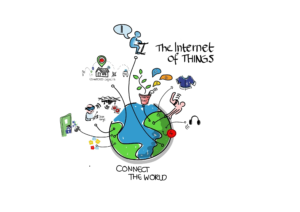How Technology Has Revolutionized Communication Over the Decades

How technology has revolutionized communication over the decades is a fascinating journey through human ingenuity and technological progress. Imagine a world without instant messaging, emails, or social media; communication was once significantly slower and less widespread. This article delves into the transformative impact of technology on communication, tracing its evolution from the earliest forms to modern-day tools. We’ll explore the key milestones, analyze the advantages and challenges, and discuss the future of global communication. This exploration is divided into sections addressing the evolution of communication methods, the effects on social interaction, and the future of global interaction.
1. The Dawn of Communication: Early Technologies
1.1 The Pre-Electronic Era
Early communication relied heavily on physical means such as writing, messengers, and signals. Postal services, while slow, connected distant communities. The development of the printing press was a major turning point, enabling mass dissemination of information and ideas, albeit limited by the technology of the time. The use of drums and smoke signals for long-distance communication played a crucial role in various cultures. These early methods, though basic compared to modern standards, allowed for vital communication across geographical boundaries. They were fundamental in the development of language, history, and civilizations. This stage was vital in preparing for more sophisticated technologies to come.
1.2 The Telegraph and the Rise of Speed
The invention of the telegraph marked a significant leap forward in communication speed. This technology used electrical signals to transmit messages across vast distances, dramatically reducing communication time. The telegraph revolutionized business transactions, military operations, and even personal correspondence. It allowed for faster communication, boosting trade, connecting distant regions, and significantly impacting global events. This shift ushered in a new era, setting the stage for future developments in the realm of communication technology.
1.3 Early Forms of Broadcast Media
The advent of radio broadcast marked a revolutionary step towards mass communication. Radio allowed for the transmission of audio signals over long distances, enabling the broadcasting of news, entertainment, and advertising to vast audiences. This development fundamentally altered social interaction and public opinion.
2. The Electronic Age: Communication Goes Global
2.1 The Rise of Television
Televisions transformed the way information was disseminated, and social interaction experienced a profound change. The ability to see and hear events unfold in real-time expanded horizons for individuals. This powerful visual medium also proved to be a powerful tool for shaping public opinion, advertising, and cultural exchange.
2.2 The Computer and the Internet: Connecting the World
The development of computers and the internet is a landmark achievement in the realm of global communication. The internet fostered unprecedented access to information and facilitated instant communication through emails, chat rooms, and social networking platforms. These networks connect individuals across geographical boundaries, facilitating communication and exchange of information. These innovations have dramatically altered how we work, learn, and socialise, fostering a global village where shared experience and immediate connections are possible.
2.3 Mobile Communication: Anytime, Anywhere
The advent of mobile phones has been a pivotal moment in communication history. Mobile devices enable instant communication and access to information, offering unprecedented convenience and connectivity. The shift towards mobile communication has fundamentally altered how people work, learn, socialize, and maintain personal connections.
3. The Digital Revolution: Communication in the 21st Century
3.1 Social Media: Transforming Social Interaction
Social media platforms have transformed the way people interact and share experiences. These platforms offer a powerful avenue for connecting with others, sharing content, and participating in discussions on a global scale. This connection has a profound impact on cultural exchange, business networking, and public discourse.
3.2 Instant Messaging and Video Conferencing: Real-time Connectivity
Instant messaging and video conferencing tools facilitate real-time communication between individuals across the globe. Tools like WhatsApp, Skype, and Zoom have blurred geographical boundaries, enabling seamless collaboration and personal interactions despite physical distance. These technologies have become fundamental in work environments, educational settings, and personal relationships.
3.3 The Future of Communication: Artificial Intelligence and Beyond
The integration of artificial intelligence (AI) into communication technologies is likely to further revolutionize the way we interact. AI-powered tools can translate languages in real time, summarize information, and personalize communication experiences. These advancements are transforming various aspects of communication by improving accessibility and efficiency.
4. Impacts on Social Interaction and Business
4.1 Social Interaction and Personal Connections
Technology has fundamentally changed social interactions, blurring the lines between physical and virtual connections. Social media, instant messaging, and video conferencing platforms provide alternatives to in-person interaction and facilitate interactions with individuals across the globe.
4.2 The Effect on Business and Collaboration
Communication technologies empower businesses to collaborate with stakeholders across the globe. Instant communication, remote work, and online meetings have created more flexible and cost-effective methods for businesses to operate internationally.
Related Post : Cloud Computing in 2024 Latest Advancements and Applications
5. Challenges and Considerations
5.1 Privacy Concerns and Information Security
The proliferation of communication technologies raises concerns regarding privacy, security, and data protection. Users need to be aware of these potential issues and adopt safe practices to safeguard personal information.
5.2 Digital Divide and Accessibility
Uneven access to technology and digital literacy skills can create a digital divide. Efforts are needed to bridge this gap and ensure equitable access to communication tools for everyone.
6. Future Trends and Predictions
6.1 The Rise of Virtual and Augmented Reality
Virtual reality (VR) and augmented reality (AR) are poised to reshape communication by creating immersive and interactive experiences. This technology could revolutionize how people experience events and information, potentially even offering alternatives to physical travel for communication and cultural exchange.
6.2 The Role of AI in Communication
Artificial intelligence (AI) is likely to further transform communication by personalizing and automating interactions. AI-powered tools can assist with language translation, information summarization, and adapting communication to individual needs.
7. Conclusion: Embracing the Future of Communication
7.1 Summary of the Impact of Technology
Technology’s impact on communication has been transformative, shifting from slow, localized methods to instant, global connections. The ability to interact with others across the globe fosters a sense of interconnectedness and shared experiences. Understanding the historical context and impact on communication is crucial to navigating this increasingly complex digital world.
7.2 Future Opportunities and Challenges
As communication technologies continue evolving, opportunities for global connection and collaboration increase. However, it’s crucial to address ethical considerations such as data privacy, misinformation, and the digital divide. It is critical to leverage this technology responsibly and ethically for the benefit of society.
In conclusion, technology has dramatically reshaped communication over the decades, making it faster, more accessible, and more diverse. From the telegraph to the internet, we’ve witnessed a remarkable evolution. As we move forward, the potential for innovation in communication continues to grow exponentially. Embracing these advancements and responsibly utilizing the tools available will be crucial to navigating the increasingly interconnected world. Stay informed and continue exploring how communication technology shapes our daily lives, and share your insights! Learn more about the future of communication by visiting our website!
Share this content:













Post Comment